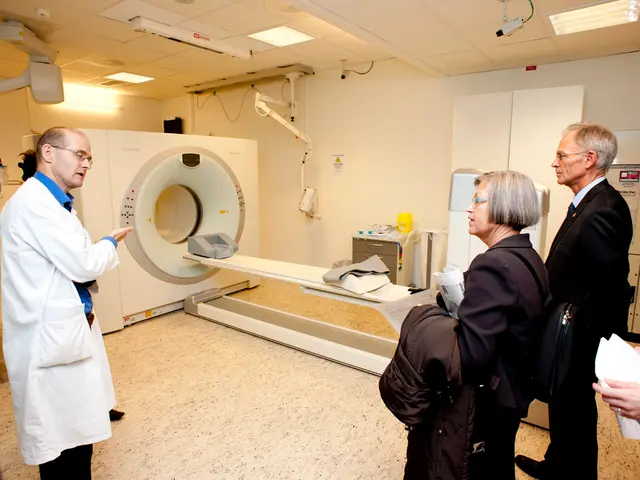Nearly everyone encounters it frequently.
In recent years, the cities of Stuttgart in Germany and various regions across Switzerland have found traces of PFAS, also known as Perpetual chemicals, in their drinking water and food products. This persistent contamination has raised concerns about potential health risks and the need for stricter regulations.
Stuttgart and the Rastatt Region
Tests conducted by environmental NGO BUND in 2025 revealed PFAS contamination in 14 out of 22 chicken egg samples in Germany, with eggs from hobby farmers particularly affected. The Rastatt region in central Baden is a well-known hotspot for PFAS contamination, due to the use of contaminated compost from the paper industry as fertilizer between 2005 and 2008. The BUND admitted that the PFAS found in Stuttgart's water is not directly harmful to health, but the Rastatt utility company is seeking compensation from the fertilizer and compost manufacturer Umweltpartner Vogel AG for the estimated 6.5 million euros needed to address the contamination.
PFAS Contamination in Food Products
Children are particularly vulnerable due to possible immune system effects from regular exposure through contaminated food. In Germany, PFAS have been found in significant quantities in various food products, especially animal-derived ones. In Switzerland, traces of PFAS have been found in cow's milk in the cantons south of Lake Constance, particularly in Appenzell Innerrhoden.
Health Risks and Regulatory Responses
PFAS are persistent chemicals that can bioaccumulate and have been linked to cancer, immune system weakening, organ damage, and reproductive harm. The European Union is taking action against PFAS, with the revised Drinking Water Directive coming into force at the beginning of 2026, containing for the first time a generally applicable limit value for PFAS within the scope of the law. Switzerland's draft Chemical Risk Reduction Ordinance revision signals stricter future controls aimed at reducing environmental releases and exposure.
Remediation Measures
Germany and Switzerland are advancing regulatory controls, including bans and restrictions on PFAS compounds, particularly pesticides and industrial uses. NGOs and scientific groups advocate for lowering legal limits, banning PFAS pesticides, and establishing binding drinking water standards for TFA across the EU and Switzerland. On the industrial and product level, companies are preparing for comprehensive PFAS bans and regulatory changes by engaging independent testing and compliance measures.
Examples of PFAS Contamination
The PFAS contamination at the Memmingen Airport stems from the use of the land as an air force base by the federal army before 2004, where PFAS-containing firefighting foam was used during training exercises. The PFAS contamination in the cantons south of Lake Constance is believed to have originated from the use of contaminated sludge as fertilizer in the 1990s. In 2022, a scandal involving PFAS-containing firefighting foam was made public at Lake Constance, affecting the canton of St. Gallen.
In conclusion, both Switzerland and Germany face significant challenges from PFAS contamination, particularly in the food chain, with increasing evidence of health risks driving regulatory reforms and calls for stricter limits, enhanced monitoring, and remediation initiatives. The ongoing efforts to address PFAS contamination highlight the need for continued vigilance and action to protect public health and the environment.
[1] BUND (2025). PFAS in Chicken Eggs: Test Results and Recommendations. [2] European Commission (2019). Council Conclusions on PFAS. [3] Swiss Federal Office for the Environment (2024). Monitoring and Testing of Food Products and Environmental Samples for PFAS. [4] Federal Office for the Environment (2025). Draft Revision of the Chemical Risk Reduction Ordinance. [5] Canton of St. Gallen (2024). Ban on the Sale of Contaminated Meat and Milk.
- Other scientific research on PFAS contamination suggests that frequent exposure during childhood could lead to immune system issues, given the vulnerability of children.
- In light of the potential health risks associated with PFAS, there is a growing focus on health-and-wellness and fitness-and-exercise industries, as these chemicals can bioaccumulate and impact physical fitness over time.
- As concerns about climate change and environmental science grow, it is crucial to address the environmental impact of PFAS and find ways to prevent their release into the environment, for the sake of both human health and the wellbeing of the climate-change-affected planet.




